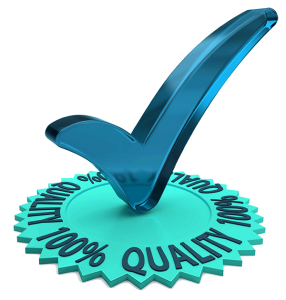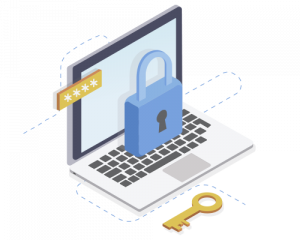With global medical device regulations undergoing significant overhauls, precision in MDR translations is crucial for manufacturers to access and maintain a presence in international markets. The term “MDR” refers broadly to medical device regulations and specifically to EU Regulation 2017/745, known as “The MDR,” which has set forth a new legal framework for medical devices. Following extensions to accommodate industry challenges and the pandemic impact, the transitional provisions under the MDR will continue to apply until 2027 for certain cases. By the end of 2027, many currently available medical devices must comply with the MDR to avoid market withdrawal. Accurate and timely translation of all related documentation, including Instructions for Use (IFUs) and patient information, is mandatory across the EU’s 24 official languages, ensuring accessibility for all stakeholders.
With all these recent changes, medical device manufacturers will need someone on their side. CSOFT is certified in ISO 13485:2016, ISO 17100: 2015, and ISO 9001: 2015 and has an in-depth understanding of the new EU MDR to ensure there are no delays for medical device products entering the EU market. Combining our vast network of in-country professional linguists and subject matter experts, advanced language technology, and localization best practices, CSOFT will enable a smooth transition from the old framework to the new.

White Paper Insight: Navigating MDR Compliance for Medical Device Manufacturers
Discover comprehensive insights with our white paper, “Ensuring MDR Compliance: Looming Challenges in the EU for Medical Device Manufacturers.” Delve into the complexities of the MDR transition, extended deadlines, and the intricate recertification demands that over half a million medical devices face by 2027. This pivotal document guides through the challenges and offers pragmatic solutions and resources provided by the MedTech Alliance—a consortium including GCP-Service, Gouya Insights, and CSOFT Health Sciences. Aimed at aiding manufacturers, especially those dealing with high-risk devices, our white paper is a vital resource for staying informed and prepared in the evolving landscape of EU medical device regulations.
Download our whitepaper here.
Medical Device Regulatory Translations
The medical device sector remains one of the most highly regulated industries within the life sciences, with strict laws and guidelines to protect patients, manufacturers, and all end-users of this technology. As evidenced by the MDR’s new level of complexity, it will only get more complicated in the years to come. To navigate these regulations and successfully expand into new global markets, medical device regulatory translations for all required documentation are necessary and remain effective for adhering to international medical and safety regulations. To help companies safely meet global standards for all product life cycle phases, CSOFT Health Sciences provides high-quality life science regulatory translations, including medical device regulatory translations.
Learn more about our life science regulatory translations.
Medical Device Document Translations
The medical devices development process requires manufacturers to submit a variety of medical device documents, including documents for regulatory submissions, patents, and international business agreements, instructions for use (IFU), manufacturing process descriptions, package labels and inserts, phase 0-IV clinical trial documentation, post-market safety reporting, CE marking technical files, operation procedures, and more. These previously listed documents are undergoing massive changes thanks to the MDR. As the demand for medical devices grows overseas, manufacturers must ensure that translations of each medical device’s documentation are completed accurately and promptly. CSOFT Health Sciences specializes in end-to-end translations for medical device documentation across all stages of the medical device development lifecycle and leverages a global team of over 10,000 linguists and subject matter experts to provide advanced medical translation of all document types.
Learn more about our medical document translation services.
Medical Device Manual Translations
The MDR is designed to ensure that medical devices safely and properly deliver precision care. These operations require an in-depth understanding of these devices’ components, operating systems, and mechanical features. Medical device manuals are technical documents that outline the procedures, instructions, protocols, and schematics for all types of medical devices. Especially when selling medical devices to international markets or training new staff on how to operate these devices, it is essential that all personnel fully understand the manual without language functioning as a barrier to communication. Whether translating manuals to gain MDR compliance or to educate staff and suppliers on operational procedures, CSOFT Health Sciences provides end-to-end medical device manual translations in all the official languages of the EU.
Learn more about our medical device manual translations.
Quality Assurance
CSOFT Health Sciences has developed a process for quality assurance to ensure that every medical translation project meets quality standards in a cost-effective and timely manner. We are certified in ISO 17100:2015, ISO 9001:2015, and ISO 13485:2016 to ensure our customized solutions meet global regulatory requirements. Our subject matter expert linguists have at least seven years of experience and work with in-country reviewers and project style guides to meet industry standards. CSOFT offers an online translation management ecosystem for one central location to leverage real-time translation memory and terminology management through our innovative cloud-based technology. Every step of the way, CSOFT has you covered.
Learn more about our quality assurance process.
Data Security
With over 20 years of experience in medical translation, CSOFT Health Sciences understands the importance of data security to our clients, and we take nothing for granted when confidentiality is a concern. Our well-documented and fully traceable information data security policies, checklists, and quality records leverage the best practices of ISO 27001. They are designed to protect everything from source data to translations. From our 24/7/365 data monitoring and advanced encryption to our access control measures, you can be sure that your project data is safe from start to finish.
Learn more about how CSOFT prioritizes data security.

